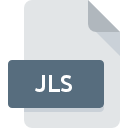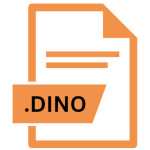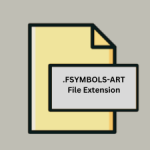.JLS File Extension

JPEG-LS Image
| Developer | Joint Photographic Experts Group |
| Popularity | |
| Category | Raster Image Files |
| Format | .JLS |
| Cross Platform | Update Soon |
What is an JLS file?
The ‘.JLS’ file extension is associated with JPEG-LS, an image compression standard designed for lossless and near-lossless compression of digital images.
Unlike the widely known JPEG format, which is primarily used for lossy compression, JPEG-LS offers a more efficient way to compress images without sacrificing image quality.
More Information.
The development of JPEG-LS stemmed from the need for efficient image compression in medical imaging, satellite imagery, and other fields where preserving fine details is crucial.
Its design balances between high compression efficiency and low computational complexity, making it suitable for both storage and transmission of high-quality images in various applications.
Origin Of This File.
JPEG-LS was developed by the Joint Photographic Experts Group (JPEG) as an ISO/IEC standard (ISO/IEC 14495-1) in 1999.
The aim was to provide a compression method that could achieve higher compression ratios than traditional lossless methods while maintaining image fidelity comparable to or better than those methods.
File Structure Technical Specification.
The structure of a ‘.JLS’ file adheres to the specifications defined by the JPEG-LS standard.
It utilizes predictive coding techniques combined with context modeling to reduce redundancy in image data. Key technical aspects include:
- Prediction: Predictive techniques are used to estimate pixel values based on neighboring pixels.
- Context Modeling: Adaptive modeling of pixel contexts enhances compression efficiency.
- Entropy Coding: Arithmetic coding or run-length coding is typically used for further compression of residual errors.
- Parameters: Users can adjust parameters such as preset coding parameters (near-lossless settings) and predictor selection to optimize compression results.
How to Convert the File?
Converting a ‘.JLS’ file to other formats or vice versa typically involves using image processing software that supports JPEG-LS. Here’s a general method:
- Conversion Tools: Use image conversion tools like Adobe Photoshop, GIMP, or specialized medical imaging software.
- Export Options: These tools often offer export options where you can select the desired output format (e.g., JPEG, PNG, TIFF) and specify compression settings.
- Batch Processing: For multiple files, batch processing capabilities in software can streamline the conversion process.
Advantages And Disadvantages.
Advantages:
- Compression Efficiency: JPEG-LS achieves higher compression ratios than traditional lossless methods.
- Image Quality: It maintains excellent image quality, making it suitable for applications requiring precise image reproduction.
- Versatility: Supports both lossless and near-lossless compression, offering flexibility depending on application requirements.
Disadvantages:
- Complexity: Implementing JPEG-LS compression algorithms can be more complex than simpler formats like PNG.
- File Size: While efficient, the compression ratios may not always match newer algorithms like JPEG 2000 for certain types of images.
- Compatibility: Not as universally supported as JPEG or PNG formats, requiring specific software or codecs for viewing and editing.
How to Open JLS?
Open In Windows
- Use software like Adobe Photoshop, Microsoft Photos, or specialized medical imaging software that supports JPEG-LS.
Open In Linux
- Image editing tools like GIMP, medical imaging software with Linux support, or libraries like OpenJPEG can handle ‘.JLS’ files.
Open In MAC
- Applications such as Preview, Adobe Photoshop, or medical imaging software designed for macOS can open ‘.JLS’ files.













